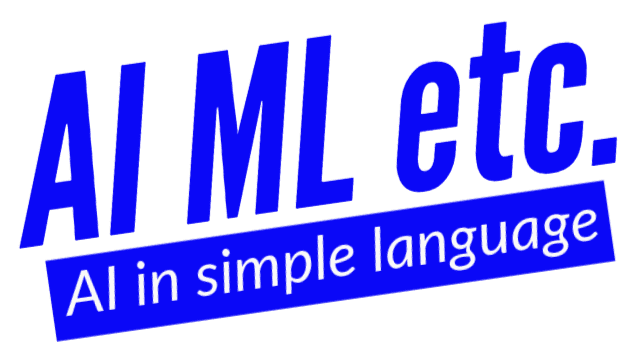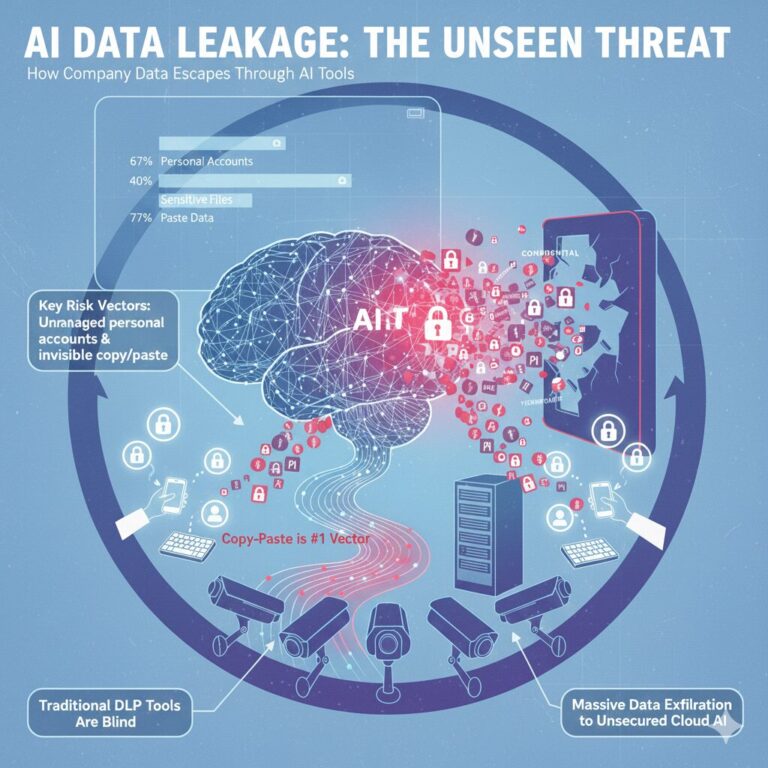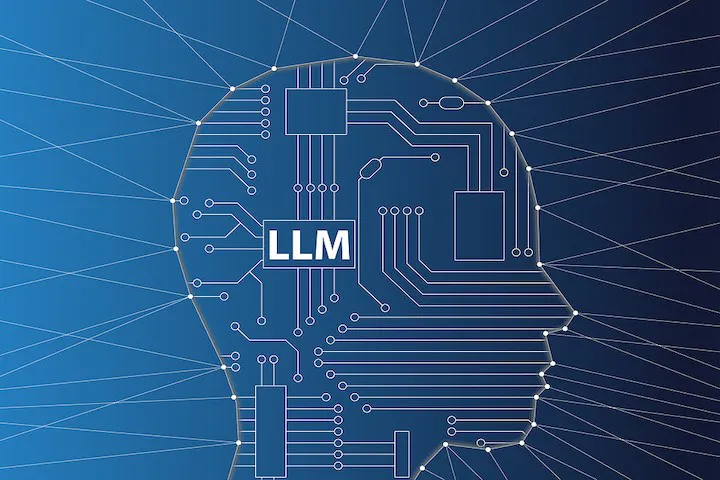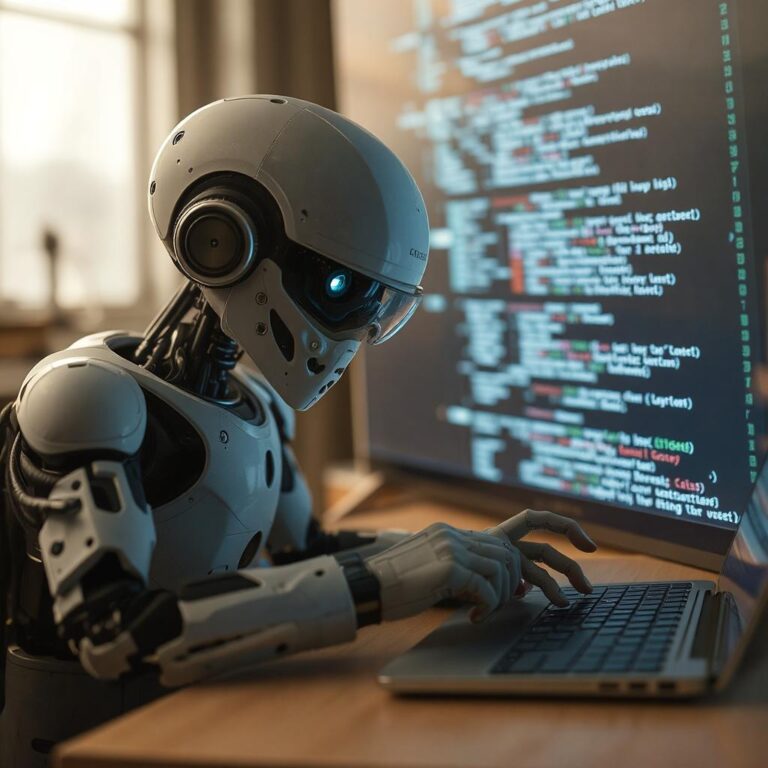Exclusive AI & LLM coaching for senior IT professionals from a Google Developer Expert (AI)
Real-life use cases of AI other than Chatbots
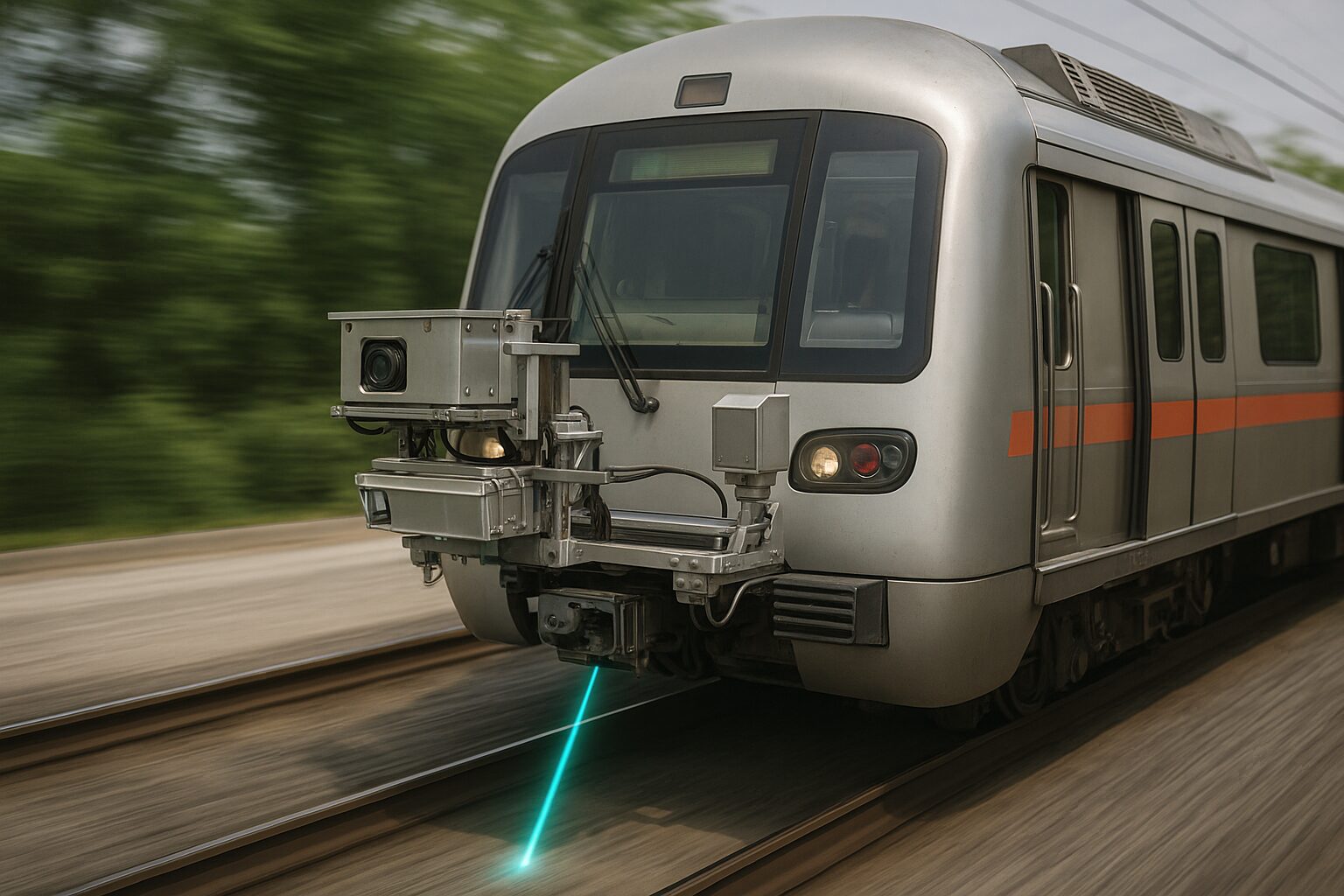
In an era where AI is often confined to chatbots and dashboards, let us see some useful Real-life use cases of AI.
1. DMRC’s AI implementation
In the heart of India’s capital, where millions rely on the metro each day, the Delhi Metro Rail Corporation (DMRC) has taken a bold leap into the future, using artificial intelligence not just as a buzzword but as a practical solution to a real problem.
The Challenge:
Rail track inspection has traditionally been a manual and time-consuming process.
It required halting services, deploying teams on-site, and still ran the risk of human oversight.
In a high-demand system like the Delhi Metro, downtime isn’t just inconvenient, it affects livelihoods, commerce, and safety.
The Breakthrough: TrackVue
To solve this, DMRC implemented an AI-driven solution called TrackVue. Think of it as a health scanner for railway tracks, except it’s mounted on a moving train.
TrackVue uses:
- High-resolution cameras to visually inspect rails,
- Lasers to measure structural integrity, and
- Inertial sensors to detect subtle irregularities.
As the train runs, the system scans and analyses track conditions in real-time.
It detects cracks, worn-out parts, and even foreign objects, without stopping a single train.
Why DMRC’s AI Implementation Matters:
This is more than just automation. It’s AI-powered infrastructure intelligence.
DMRC now can:
- Detect defects early, before they become safety risks,
- Prioritise repairs based on severity, and
- Create predictive maintenance schedules based on data, not guesswork.
The Bigger Picture:
In an era where AI is often confined to dashboards and chatbots, DMRC is showcasing what it looks like when AI meets real-world challenges head-on.
This isn’t about replacing humans, it’s about enhancing safety, boosting efficiency, and minimising disruption for millions of passengers.
DMRC didn’t just digitise the old process. They reimagined it.
And in doing so, they’ve proven one thing clearly:
AI isn’t the future of public infrastructure, it’s already on track.
2. Identifying biased property deeds
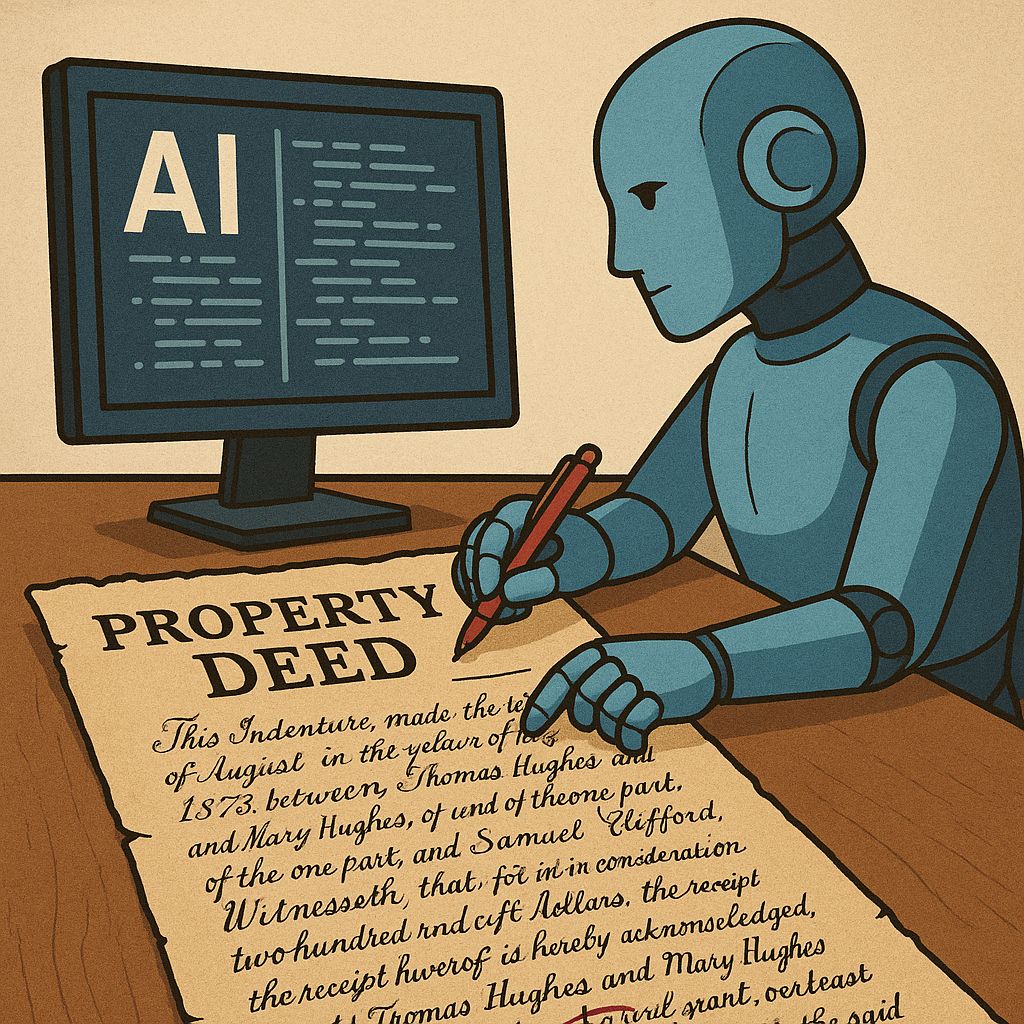
When we thought LLMs could only be used for chatbots, researchers found a useful use case
Problem:
In Northern California, many old property deeds still contain racially restrictive clauses that tried to prevent people of colour from owning or living in certain neighbourhoods.
These clauses were outlawed decades ago… but they’re still hidden in “millions” of historical documents.
So, how do you solve this?
– Manual review? Would take years.
– Keyword search? Misses nuance and flags false positives (like the surnames Black or White).
Here comes your LLM!!
Researchers from Stanford and Princeton fine-tuned a large language model to understand context, spotting nuanced, discriminatory language even when it’s not obvious
The results:
– 24,500 homes flagged with racial clauses (1 in 4 homes in 1950)
– The model scanned 5.2 million pages in 6 days, cost: $258
Manual effort would’ve taken 10 years and $1.4M
And here’s the best part: The team open-sourced their model, so other countries can now follow suit.
AI isn’t about building the future; it can help us correct the past as well.
3. Learning meaningful movements in protein folding
Can AI learn the slowest and most meaningful movements in protein folding?
The Problem:
Proteins don’t just exist; they move, fold, and change shape over time.
However, understanding how they move, especially their slow, gradual changes, is incredibly challenging.
These movements happen on complex timelines.
If we use traditional AI models, then we miss the big picture by assuming that the protein’s future depends only on its present (ignoring its memory of the past).
The Innovation:
A new deep learning method called MEMnets (Memory Kernel Minimization-based Neural Networks)
(Published in Nature Computational Science by Bojun Liu, Siqin Cao, Jordan G. Boysen, Mingyi Xue & Xuhui Huang.)
What MEMnets does:
Instead of assuming proteins behave in a memoryless way (like most models), MEMnets embraces memory, using physics and AI to track and learn from past behaviours.
This lets it:
- Discover the slowest, most important motions of proteins
- Handle complex conformational changes (even with limited data)
- Reveal hidden pathways in how proteins fold
- Work on large, challenging systems like bacterial RNA polymerase (even I don’t know what it is)
Bottom line:
AI can now help us better understand how life’s tiniest machines move, with a more realistic view of dynamics.
Real use cases of AI other than chatbots – Part 4
4. AI + Robotics = Healthier Bees, Better Crops
Problem:
Bee colonies around the world are collapsing at alarming rates (40% annually)
Beewise an Israel based startup has built a solar-powered robotic beehive that combines computer vision and robotics to monitor and automatically care for bee colonies.
And it’s already making a measurable impact: reducing colony collapse rates to just 8%.
Talk about buzzing with ideas?
Each BeeHome unit:
- Uses robot arms, cameras, and sensors to scan for parasites, hunger, heat, and more
- Takes real-time action: heating frames to kill mites, feeding bees, regulating vents, even sealing off pesticides
- Sends live alerts to beekeepers via text/email
- Runs on NVIDIA Jetson and Raspberry Pi, with a slick remote dashboard
With 75% of flowering crops dependent on pollination, innovations like this are not just cool tech; they’re agricultural lifelines.
AI is not just saving bees, it is saving food systems.
5. AI in Agriculture Isn’t Just Smart. It’s Sustainable.
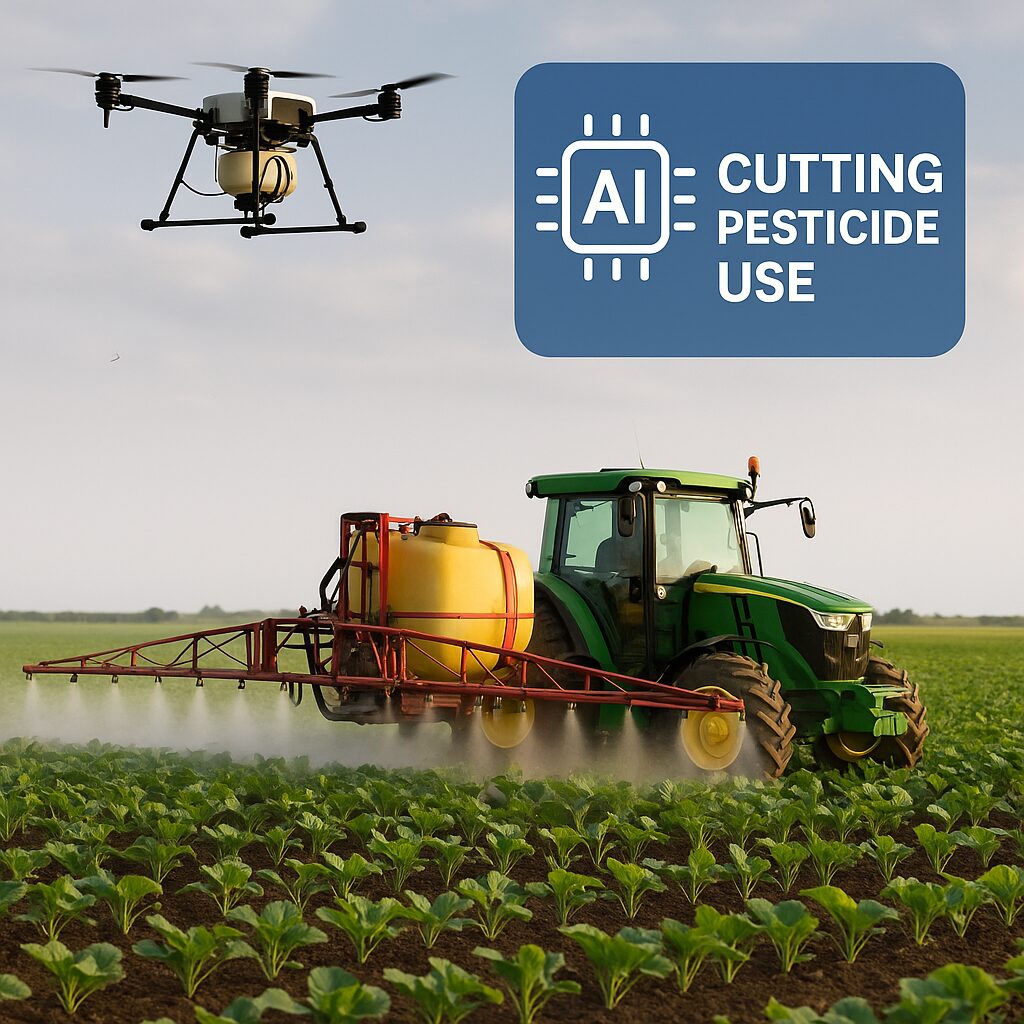
Imagine this:
A drone flies over a farm.
Its AI-powered eyes spot exactly where pests are.
A robotic sprayer then treats only those specific spots.
No blanket spraying. No chemical overload. Just precision.
That’s the power of AI-driven agriculture – cutting down pesticide use by up to 70% in some cases!
Here’s how it works:
- Computer vision detects crop diseases and pest-affected areas in real-time.
- Predictive models forecast pest outbreaks before they happen.
- Smart tools recommend when, where, and how much to spray – if at all.
The result?
– Safer food.
– Healthier soil.
– Happier farmers.
– A planet that can breathe a little easier.
From John Deere’s See & Spray tech to Bayer’s digital farming tools, the future of farming is no longer about spraying more – it’s about spraying right (or sometimes not at all).
AI is turning farms into intelligent ecosystems.
Not just feeding the world — but healing it too.
6. Uncovering the Secrets of DNA with AI!
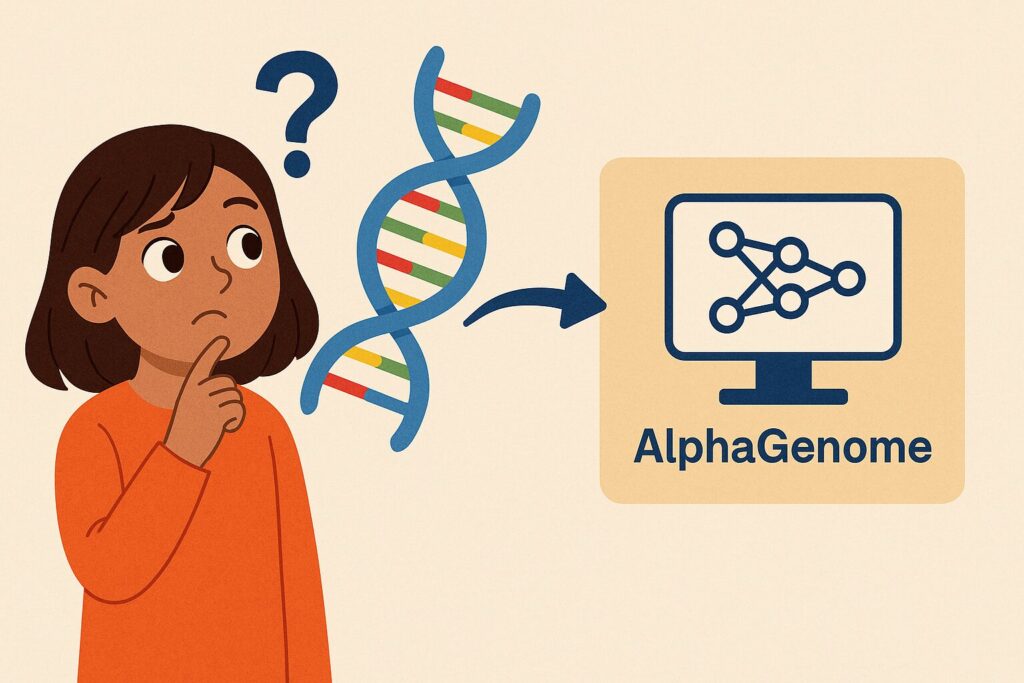
Think of your DNA like a huge instruction book for your body.
Sometimes, tiny mistakes happen in the instructions, and they can lead to health issues.
But figuring out exactly what went wrong is a huge challenge!
Enter AlphaGenome, a super-smart AI robot that reads and analyses DNA in seconds!
AlphaGenome quickly scans long DNA sequences, finds mistakes, and helps scientists understand how those mistakes might cause diseases.
What’s amazing?
It works at lightning speed (just 1 second per sequence) and is incredibly accurate, even spotting rare genetic issues others miss.
With AlphaGenome, we’re stepping closer to understanding how our DNA impacts our health, opening doors to better treatments and cures
The most up-to-date AI + Gen AI Coaching for senior IT professionals
In case you are looking to learn AI + Gen AI in an instructor-led live class environment, check out these courses
Happy learning!
If you have any queries or suggestions, share them with me on LinkedIn – https://www.linkedin.com/in/nikhileshtayal/
Let’s learn to build a basic AI/ML model in 4 minutes (Part 1)
Are you ready to lead AI in your organisation? Take this 2 minutes quiz
